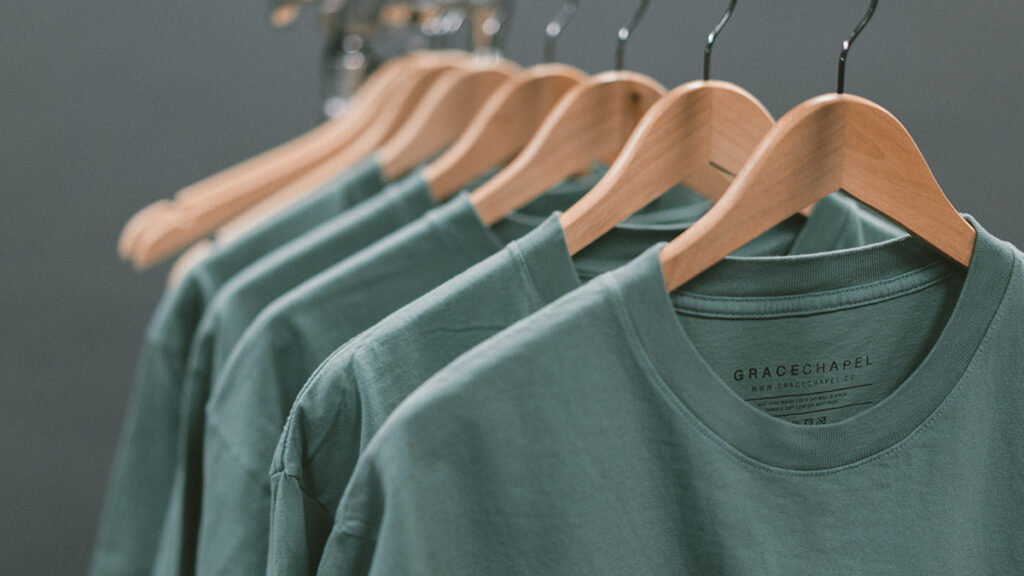Sustainable Fashion: What it Means to You and to Big Brands

2020 has left the fashion industry in a swirly. All of a sudden, sparkling couture gowns have been replaced by chic pajamas, while red stilettos are left behind closed shoe racks. But aside from the swift change in our clothing preferences, another trend is now on the rise.
Some call it sustainable fashion. Others prefer green clothing. Whatever the term, one thing is certain: there is a silver lining in this pandemic. And that, my friend, is our growing awareness of the importance of green living.
Sustainable Fashion in a Nutshell
So what is green clothing and how does it positively impact the environment? Does it mean we should trade Swarovski for recyclable paper? Well, no and no. Sustainable fashion is more than that.
While recycling old garments is a concept under green clothing, you don’t have to get fixated on using eco-friendly materials. Basically, sustainable fashion shifts the focus from the end-product to the process of making each fashion piece. And it doesn’t end with clothing, either.
The green fashion industry involves a holistic approach to creating clothes, accessories, and shoes. Aside from choosing materials, it is centered on devising a sustainable approach in producing and marketing fashion pieces across different platforms. When put into practical applications, it covers the entire product life cycle, which typically includes the following:
- The acquisition and production of raw materials
- Creating a sustainable design
- Processing the design concept
- Transportation and storage
- Product advertisement
- Actual distribution and sales
- After-sales care, repair, and recycling of products
The Purpose behind Green Clothing
Question: do you think you can last an entire year of not buying any fashion pieces? I didn’t think so, too. Fashion is a multi-billion-dollar industry that affects us on an environmental and socio-economic level. And even in the midst of a pandemic, fashion will still survive.
However, our need to create an eco-friendly lifestyle still remains. And that’s what sustainable fashion is for. In essence, the industry is set to limit any environmental impact in all stages of a product’s lifecycle. This is especially true for fashion giants that run factories and deploy massive transportation systems for product distribution.
Also, sustainable clothing extends to every household. When you buy a pair of jeans, for instance, you need to regularly wash it. This may seem harmless at first glance but most detergents are actually toxic to our waterways. This is where the green industry comes in. Apart from supervising product development, this sector is responsible for raising awareness of the best practices in maintaining clothing items.
Global Brands that Go Bigger in their Mission
Many consumers now have a growing respect for companies that produce eco-friendly products. Since the fashion industry is a huge contributor to climate change and pollution, many brands have repositioned their items. While they are not claiming 100% eco-friendliness, these big brands are now getting bigger for their sustainable efforts:
Adidas
Adidas is definitely good news to all sneaker-heads out there who want to make a positive environmental impact. It is one of the first shoe brands that have always been vocal about stepping towards an eco-friendlier approach. And in 2015, it collaborated with Parley to create sneaker pairs made from sustainable materials. Together, they released shoes made from gill nets and recycled plastic recovered from the ocean.
The result? Millions of sneakers sold out in both 2017 and 2018. And the shoe brand is not showing any signs of backing down from its cause. Indeed, with Adidas, staying trendy, comfy, and environmentally-friendly is always just a shoe away.
Patagonia
A brand made for the outdoors, Patagonia stays true to its commitment to deliver unrivaled durability. But aside from its product’s superior build and quality, there’s also one thing that sets Patagonia apart. Its transparency.
The brand is known for embracing an eco-friendly approach, but it’s their business ethics that won over their market. For example, Patagonia is honest about not being 100% eco-friendly. According to the brand, they used fossil fuels for the production of their coats, but they are finding alternative ways to manufacture their product.
In addition to their honesty (and bravery), the brand also donates 1% of its profits to Earth Tax–a group supporting environmental conservation.
Toms
Who would have known that a trip around the world can lead to the global shoe brand we all love, Toms. Founded by Blake Mycoskie, Toms is an organization that started out as a vision.
As Mycoskie traveled around, he discovered that there are less-fortunate children growing up without shoes. Being the philanthropist that he is, he took action and launched Tom to suffice these children’s need for footwear. The business continues its commitment to donate 1 pair of shoes to communities in need for every shoe purchase.
Additionally, Toms provides clean drinking water, along with birth kits and eye services to poor communities. Not that its benevolence isn’t enough, Toms is one of the topmost eco-friendly brands in the world. It uses sustainable materials and devises the best practices for its production.
Okay, let’s head out to the nearest Toms store now!
Pact
If there’s a clothing line that’s pretty much obsessed with sustainable fashion, it’s Pact. While some brands claim using organic cotton, Pact goes the extra mile to ensure sustainability in its operations. Instead of getting their materials from suppliers, they go as far as harvesting their own cotton.
As if it has a “pact” with Mother Earth, Pact is not just serving your dresser with 100% organic cotton. It also helps sustain the livelihood of farmers while sustaining the best green practices.
Lastly, Why Green Fashion?
Have you ever bought an eco-friendly product and felt like you did something great afterward? Just like you, most consumers nowadays are becoming more eco-conscious. By supporting green brands, you can also make a huge environmental impact, one purchase at a time. And it doesn’t have to end there. If you own a business in the fashion industry, now is the best time to think about sustainability.






